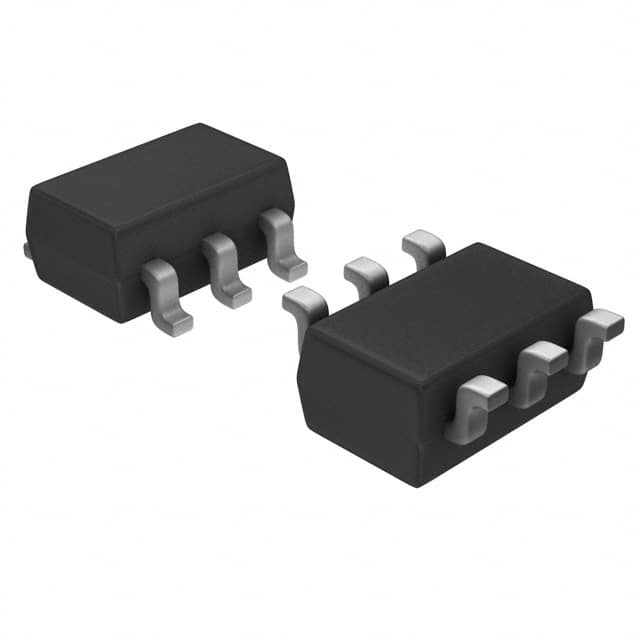TPS3103E12DBVRG4 Product Introduction:
Texas Instruments Part Number TPS3103E12DBVRG4(PMIC - Supervisors), developed and manufactured by Texas Instruments, distributed globally by Jinftry. We distribute various electronic components from world-renowned brands and provide one-stop services, making us a trusted global electronic component distributor.
TPS3103E12DBVRG4 is one of the part numbers distributed by Jinftry, and you can learn about its specifications/configurations, package/case, Datasheet, and other information here. Electronic components are affected by supply and demand, and prices fluctuate frequently. If you have a demand, please do not hesitate to send us an RFQ or email us immediately sales@jinftry.com Please inquire about the real-time unit price, Data Code, Lead time, payment terms, and any other information you would like to know. We will do our best to provide you with a quotation and reply as soon as possible.
Introducing the Texas Instruments TPS3103E12DBVRG4, a cutting-edge power management solution designed to enhance efficiency and reliability in a wide range of applications. This highly versatile device offers a multitude of features that make it an ideal choice for various industries.
The TPS3103E12DBVRG4 boasts an ultra-low power consumption, making it perfect for battery-powered applications. With a wide input voltage range of 1.8V to 6V, it can be seamlessly integrated into a variety of systems. Its integrated voltage supervisor ensures stable operation by monitoring the power supply voltage and providing a reset signal when necessary.
This power management solution also features a programmable watchdog timer, allowing for precise control and monitoring of system operation. Its small form factor and low profile package make it suitable for space-constrained applications, while its robust design ensures reliable performance even in harsh environments.
The TPS3103E12DBVRG4 finds its application in a wide range of fields, including portable electronics, industrial automation, automotive systems, and IoT devices. Whether it's powering a wearable device, monitoring a manufacturing process, controlling a vehicle's electrical system, or managing a smart home network, this versatile power management solution is up to the task.
In summary, the Texas Instruments TPS3103E12DBVRG4 is a feature-rich power management solution that offers exceptional efficiency, reliability, and versatility. With its wide range of applications and advanced features, it is the perfect choice for any industry seeking to optimize power management in their systems.
Pmic-supervisors (Power Management Integrated circuit-Supervisors) is a highly Integrated Circuit component, which can detect key parameters such as voltage, current and temperature of the power system in real time, and take corresponding protective measures when necessary. To ensure the stable operation of the power system and the safety of the equipment. PMIC monitors usually integrate a variety of functions, such as overvoltage protection, undervoltage protection, overtemperature protection, etc.
Application
Pmic-supervisors (Power Management Integrated Circuit-Supervisors), as a key component of electronic equipment, is mainly responsible for real-time monitoring and adjusting the status of the power system, ensuring stable voltage and current, efficient battery management, and providing multiple protection functions. Its wide range of applications, covering mobile devices, consumer electronics, automotive electronics and industrial control and other industries, to ensure the stable operation of equipment and extend the service life.
FAQ about PMIC - Supervisors
-
1. What is the difference between PMU and PMIC?
The main difference between PMU and PMIC is that they have different application scenarios and functional positioning. PMU is a power management unit, which is mainly used in portable devices to integrate traditional discrete power management chips to improve efficiency and reduce power consumption. PMIC is a power management integrated circuit, which is mainly used for highly integrated power management solutions, encapsulating multiple output power supplies in one chip to improve efficiency and reduce size.
-
2. What is PMIC in cars ?
PMIC in cars is a power management integrated circuit, which is mainly used to manage and control the power supply in cars. PMIC ensures stable and reliable operation of automotive electronic systems by converting, distributing, monitoring, and regulating power.
PMIC is widely used in automobiles, mainly in scenarios such as smart cockpits, autonomous driving, body electronics, instrumentation and entertainment systems, lighting systems, and battery management systems (BMS). According to different application requirements, PMIC can be divided into AC/DC, DC/DC, LDO, driver chips, and battery management ICs.
-
3. What is a power monitor?
A power monitor is a device used to monitor the power status. It can monitor the voltage, current, temperature and other parameters of the power supply in real time, and issue alarm information in time to help users detect power failures in time and ensure the stable operation of the equipment.
The main functions of the power monitor include:
Improving the reliability and stability of the power system: By monitoring the voltage, current, power, frequency and other parameters of the power system in real time, timely discovering and alarming the power system's faults, abnormalities, overloads, short circuits, etc., to prevent power system failures from causing equipment downtime or data loss.
Optimizing the operating efficiency of the power system: Monitoring data can help optimize the operation of the power system, improve energy utilization, and reduce energy consumption and costs.
Provide real-time monitoring data and reports: The power parameters are collected by sensors, the monitor processes the data and issues an alarm, and the data transmission device transmits the monitoring data to the host computer or cloud server. Managers can perform real-time monitoring and data analysis, provide data reports and decision support.
 Lead free / RoHS Compliant
Lead free / RoHS Compliant





























